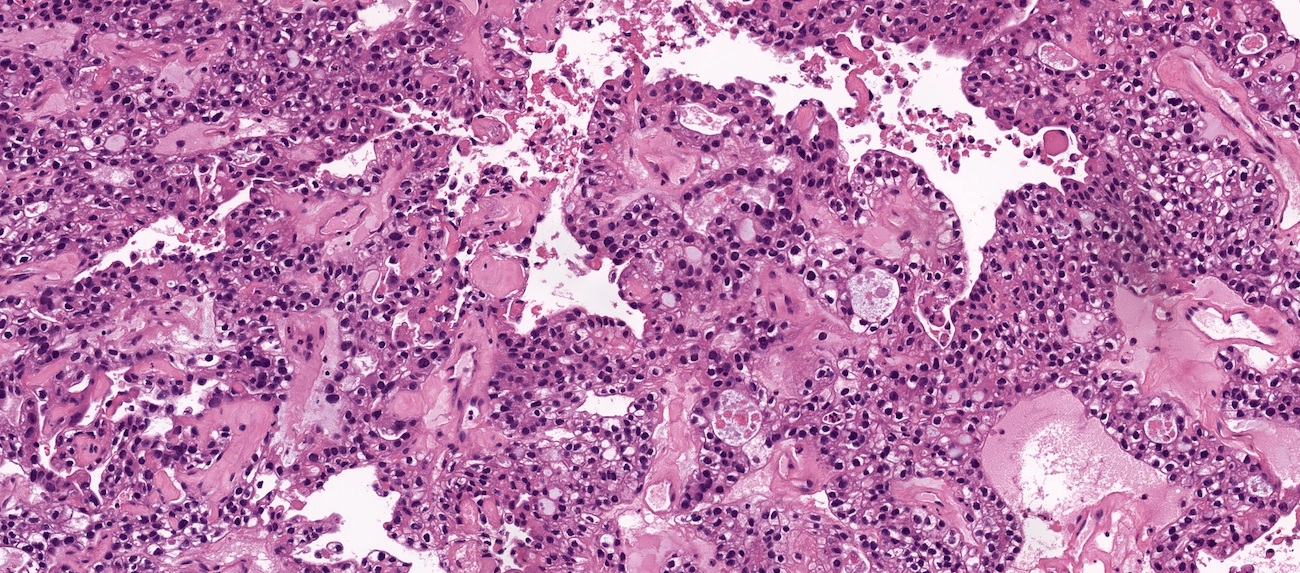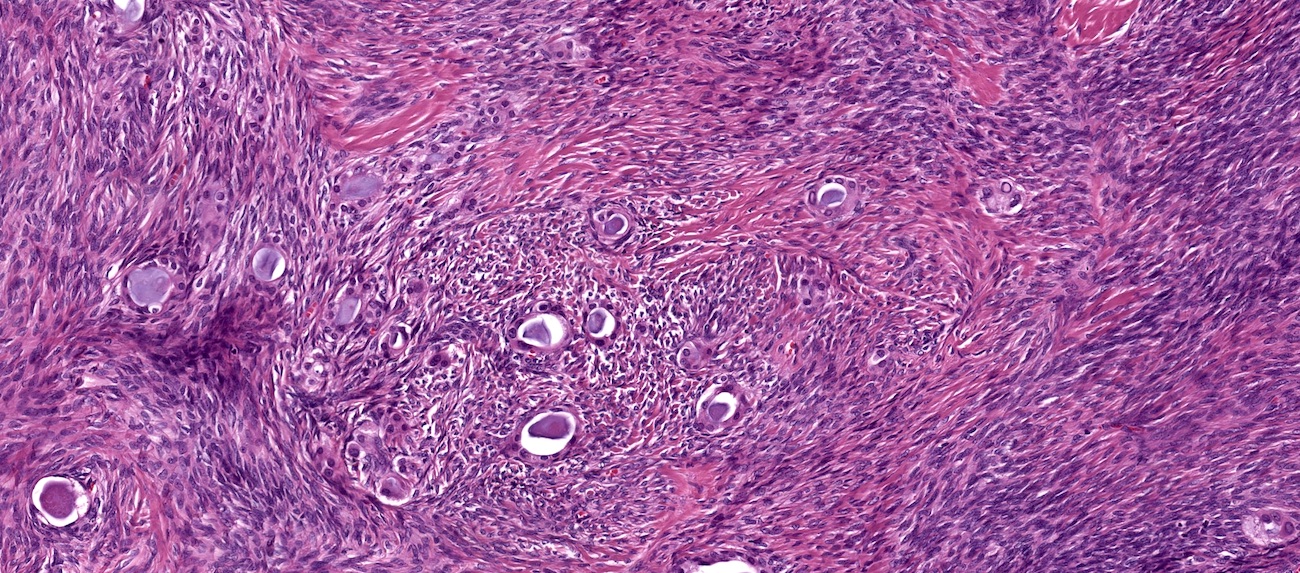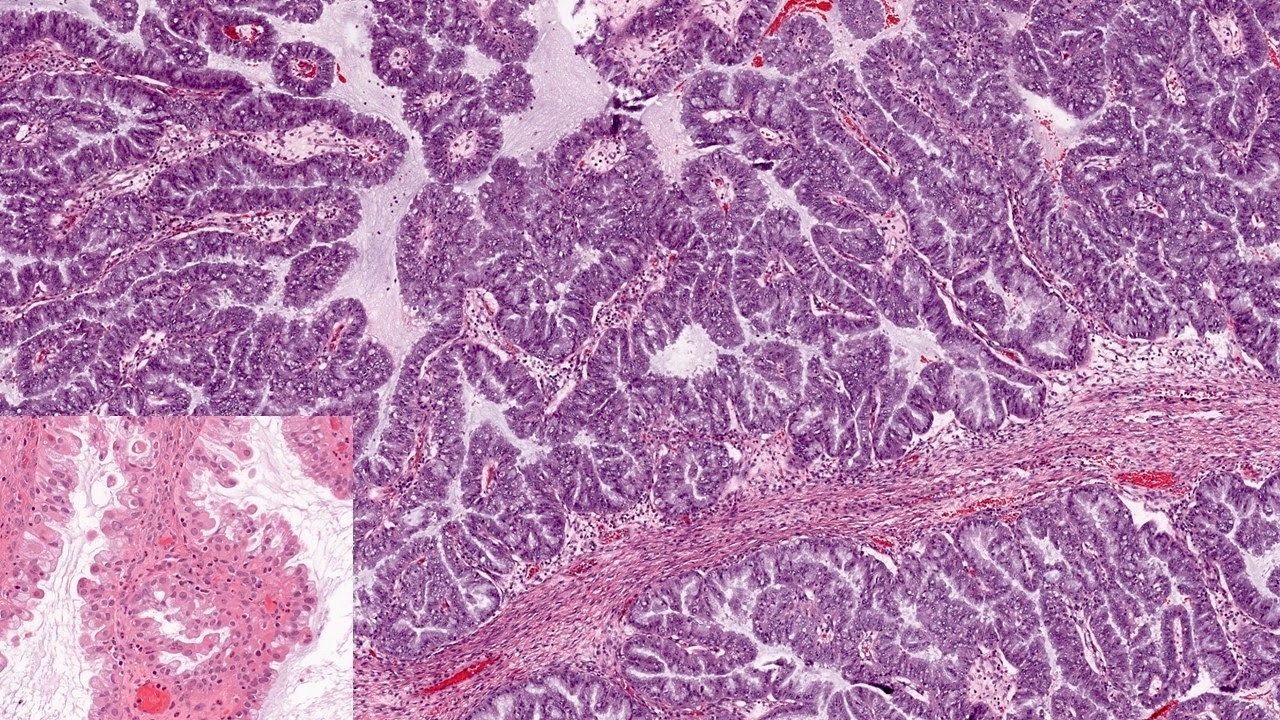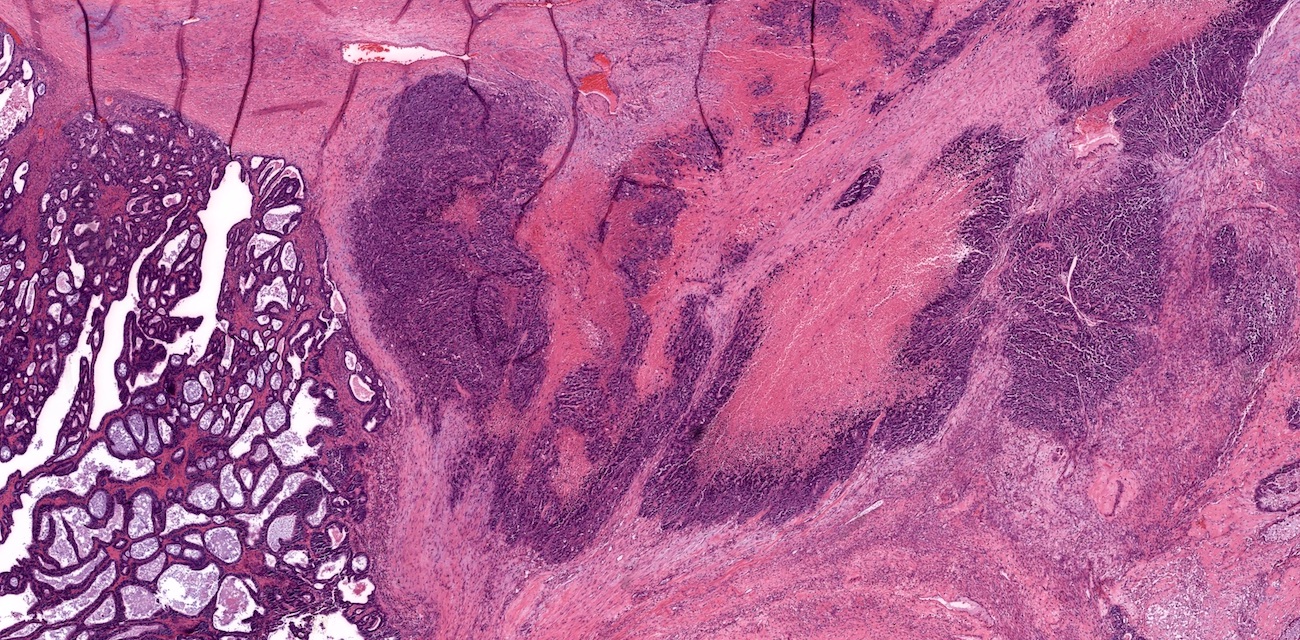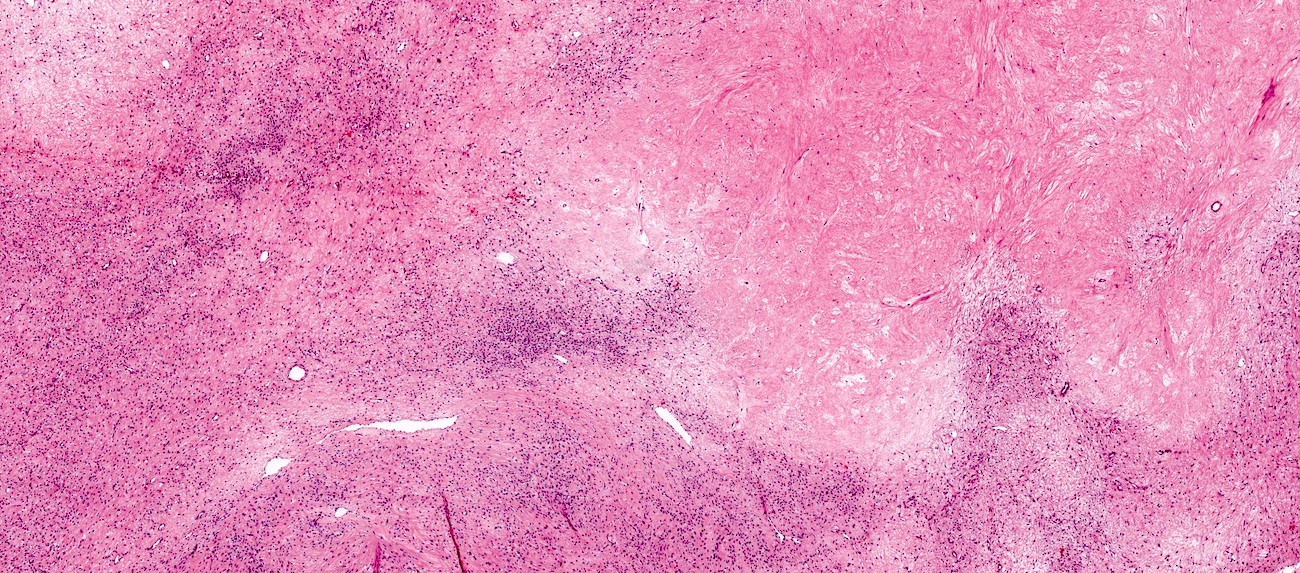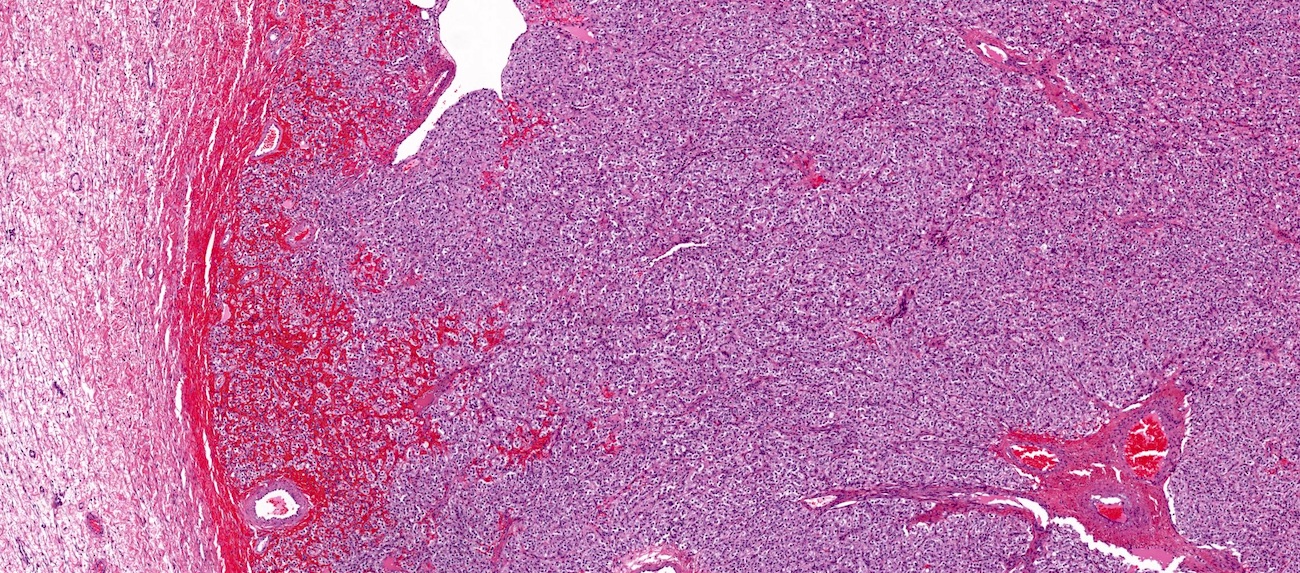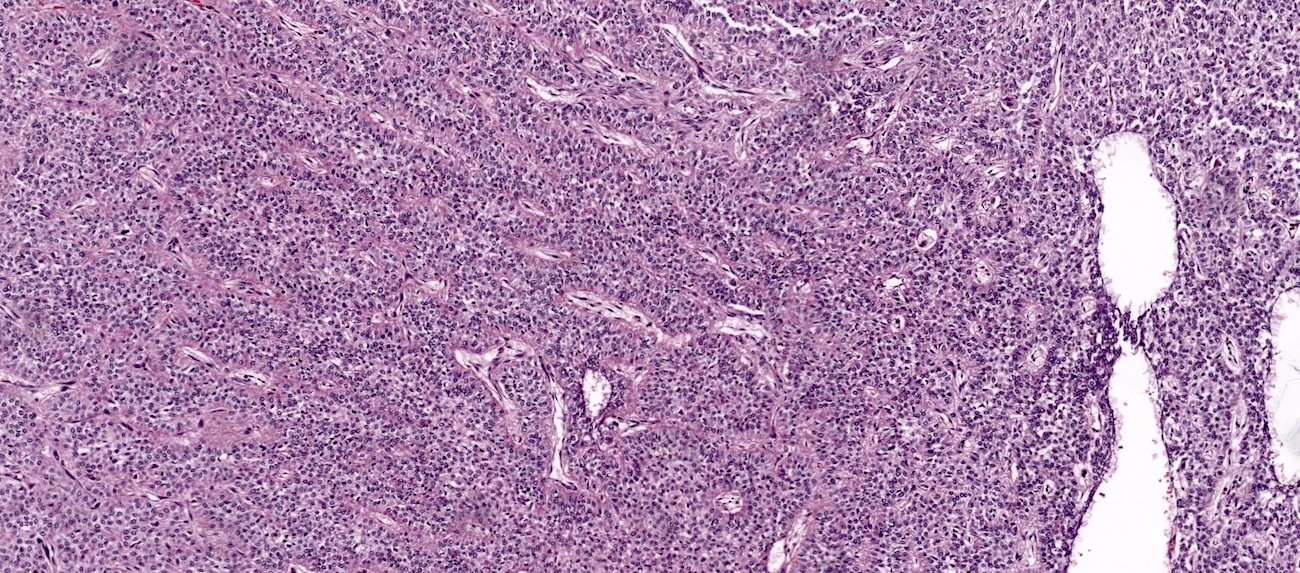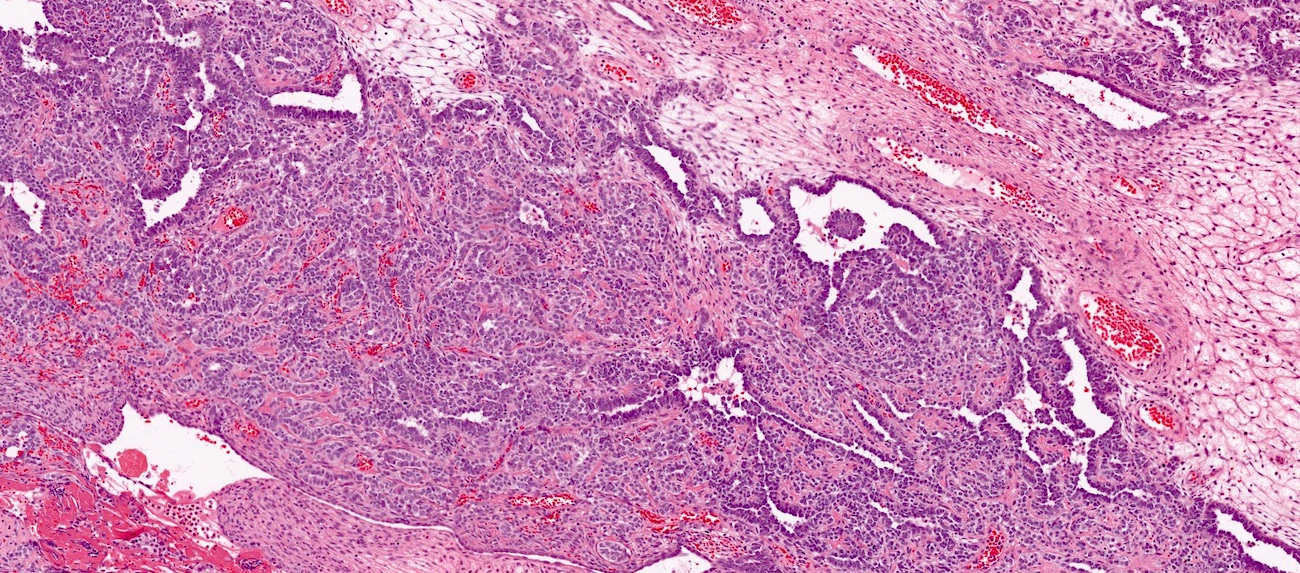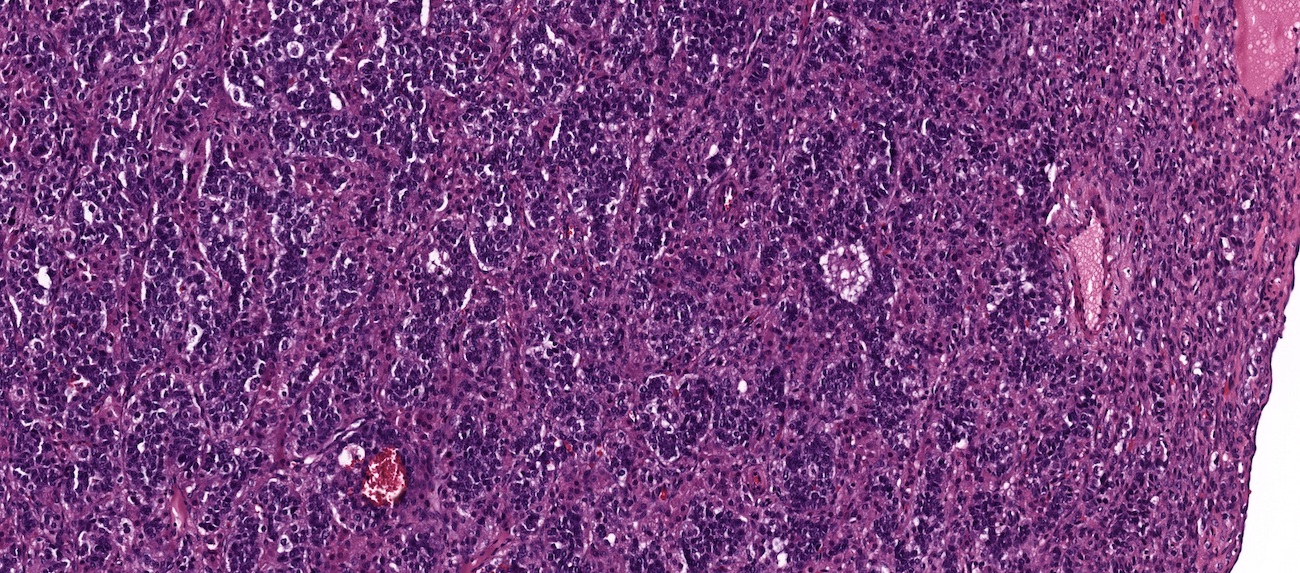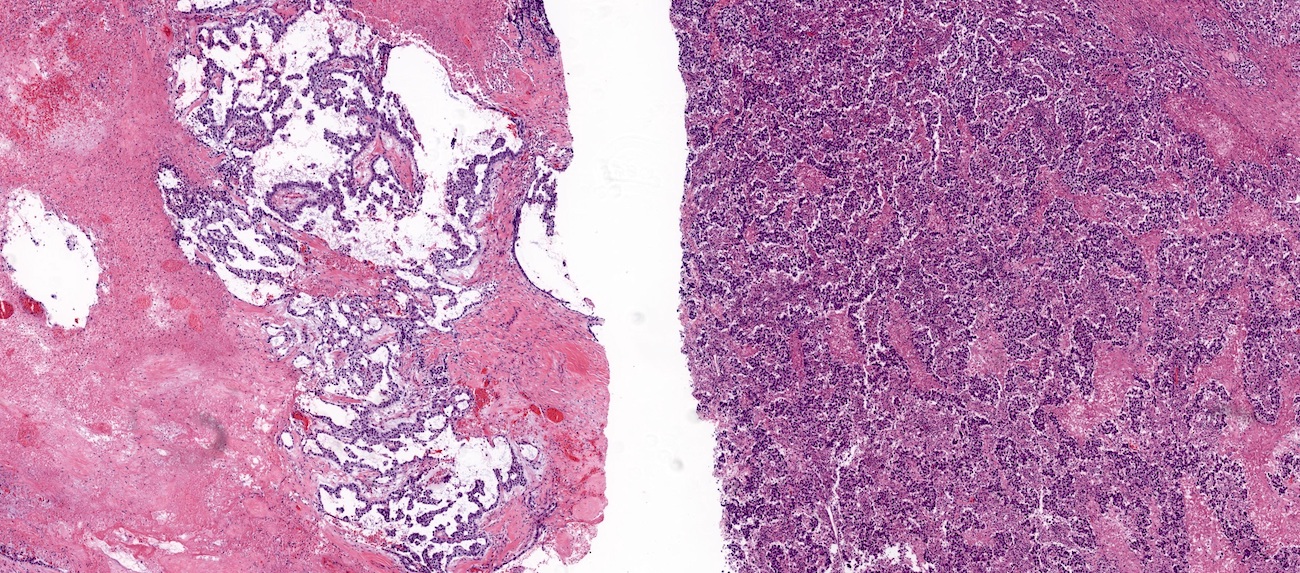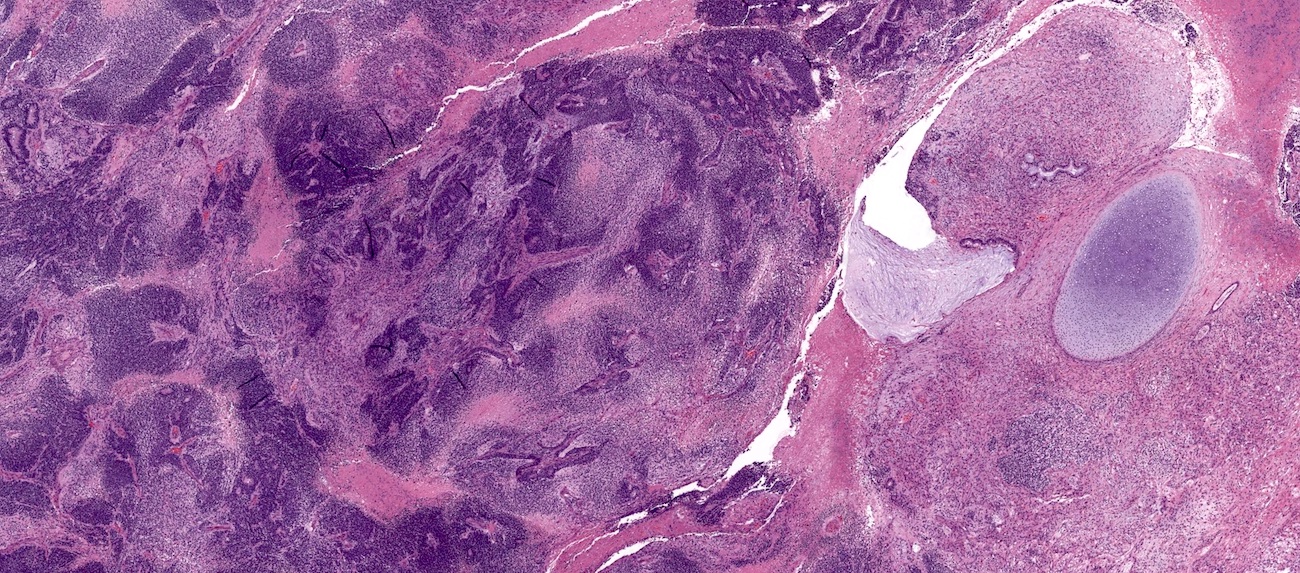Table of Contents
Definition / general | Major updates | WHO (2020) | Microscopic (histologic) images | Additional references | Board review style question #1 | Board review style answer #1 | Board review style question #2 | Board review style answer #2Cite this page: Adhikari L, Hassell LA. WHO classification. PathologyOutlines.com website. https://www.pathologyoutlines.com/topic/ovarytumorwhoclassif.html. Accessed April 2nd, 2025.
Definition / general
- This topic covers tumors of ovarian origin (primary) only, with most tumors falling under the categories of epithelial, mesenchymal, sex cord stromal and germ cell
- The remaining (exceptionally rare) tumors are in the miscellaneous category
Major updates
- WHO first classified low and high grade serous carcinoma as different subtypes of the same tumor; now it is evident that these are 2 different types of carcinoma with different molecular characteristics, immunohistochemical profile, morphology, pathogenesis and tumor progression
- Most high grade serous carcinomas of the ovary arise from the distal fimbria of the fallopian tube from a precursor lesion known as serous tubal intraepithelial carcinoma (STIC) (Pathology 2015;47:423, Mod Pathol 2015;28:1101)
- Low grade serous carcinomas of the ovary arise from benign or borderline serous neoplasms
- SET (solid, endometrial-like, transitional) patterns harbor p53 mutations and are now under the category of high grade serous carcinoma
- Many mutations have been found in sex cord stromal tumors and can differentiate subtypes, such as adult granulosa cell tumor (FOXL2) from poorly differentiated Sertoli-Leydig cell tumors (DICER1) and microcystic stromal tumor (CTNNB1 or APC mutation) (N Engl J Med 2009;360:2719, Am J Surg Pathol 2017;41:1178, Genes Chromosomes Cancer 2015;54:353)
- Small cell carcinoma of hypercalcemic type is associated with SMARCA4 mutations (Histopathology 2016;69:727)
- Seromucinous carcinoma has been removed and is now a subtype of endometrioid carcinoma (Am J Surg Pathol 2015;39:983)
- Gynandroblastoma has been reintroduced after being removed from the previous WHO edition
WHO (2020)
Epithelial tumors
Mesenchymal tumors
Mixed epithelial and mesenchymal tumors
Sex cord stromal tumors
Germ cell tumors
Miscellaneous tumors
Tumor-like lesions
- Serous tumors
- Serous cystadenoma, adenofibroma and surface papilloma
- Serous borderline tumor
- Serous borderline tumor, micropapillary variant
- Low grade serous carcinoma
- High grade serous carcinoma
- Mucinous tumors
- Endometrioid tumors
- Clear cell tumors
- Clear cell cystadenoma and adenofibroma
- Clear cell borderline tumor
- Clear cell carcinoma
- Seromucinous tumors
- Seromucinous cystadenoma and adenofibroma
- Seromucinous borderline tumor
- Brenner tumors
- Other carcinomas
Mesenchymal tumors
- Endometrioid stromal sarcoma
- Smooth muscle tumors
- Leiomyoma
- Smooth muscle tumor of uncertain malignant potential
- Leiomyosarcoma
- Ovarian myxoma
Mixed epithelial and mesenchymal tumors
Sex cord stromal tumors
- Pure stromal tumors
- Fibroma, NOS
- Thecoma
- Luteinized thecoma associated with sclerosing peritonitis
- Sclerosing stromal tumor
- Microcystic stromal tumor
- Signet ring stromal tumor
- Leydig cell tumor
- Steroid cell tumor, NOS
- Malignant steroid cell tumor
- Fibrosarcoma
- Pure sex cord tumors
- Mixed sex cord stromal tumors
- Sertoli-Leydig cell tumor
- Sex cord stromal tumor, NOS
- Gynandroblastoma
Germ cell tumors
- Teratoma, benign
- Immature teratoma, NOS
- Dysgerminoma
- Yolk sac tumor
- Embryonal carcinoma
- Choriocarcinoma, NOS
- Mixed germ cell tumor
- Monodermal teratomas and somatic type tumors arising from a dermoid cyst
- Germ cell sex cord stromal tumors
- Gonadoblastoma
- Dissecting gonadoblastoma
- Undifferentiated gonadal tissue
- Mixed germ cell - sex cord stromal tumor, unclassified
- Gonadoblastoma
Miscellaneous tumors
- Rete cystadenoma, adenoma and adenocarcinoma
- Wolffian tumor
- Solid pseudopapillary tumor
- Small cell carcinoma of the ovary, hypercalcemic type
- Wilms tumor
Tumor-like lesions
Microscopic (histologic) images
Contributed by Lewis A. Hassell, M.D.
Additional references
Board review style question #1
The WHO 2020 classification of ovarian tumors defines benign, borderline and malignant versions of which of the following tumor types?
- Brenner tumors
- Endometrial stromal tumors
- Granulosa cell tumors
- Mesonephric tumors
- Seromucinous tumors
Board review style answer #1
A. Brenner tumors are classified into 3 groups: benign, borderline and malignant. Malignant seromucinous tumors were removed from WHO 2019. The other tumors do not include these separations.
Comment Here
Reference: Ovary - WHO classification
Comment Here
Reference: Ovary - WHO classification
Board review style question #2
Board review style answer #2
D. Sex cord tumor with annular tubules is characterized by cells with clear cytoplasm, basal nuclei and eosinophilic tubular material resembling basement membrane. The cells sometimes resemble Sertoli cells and the eosinophilic tubular material can mimic Call-Exner bodies of granulosa cell tumors.
Comment Here
Reference: Ovary - WHO classification
Comment Here
Reference: Ovary - WHO classification









